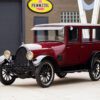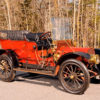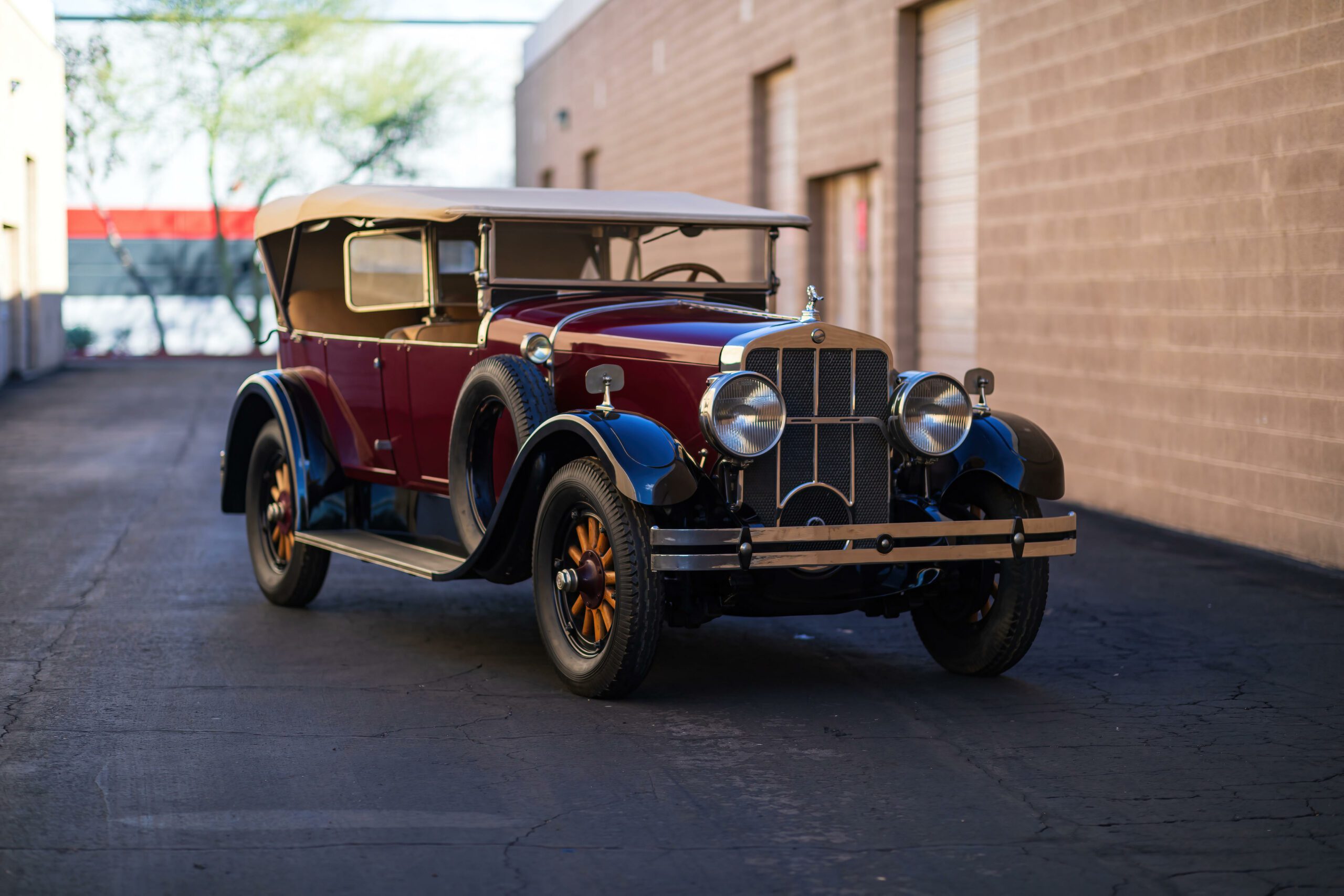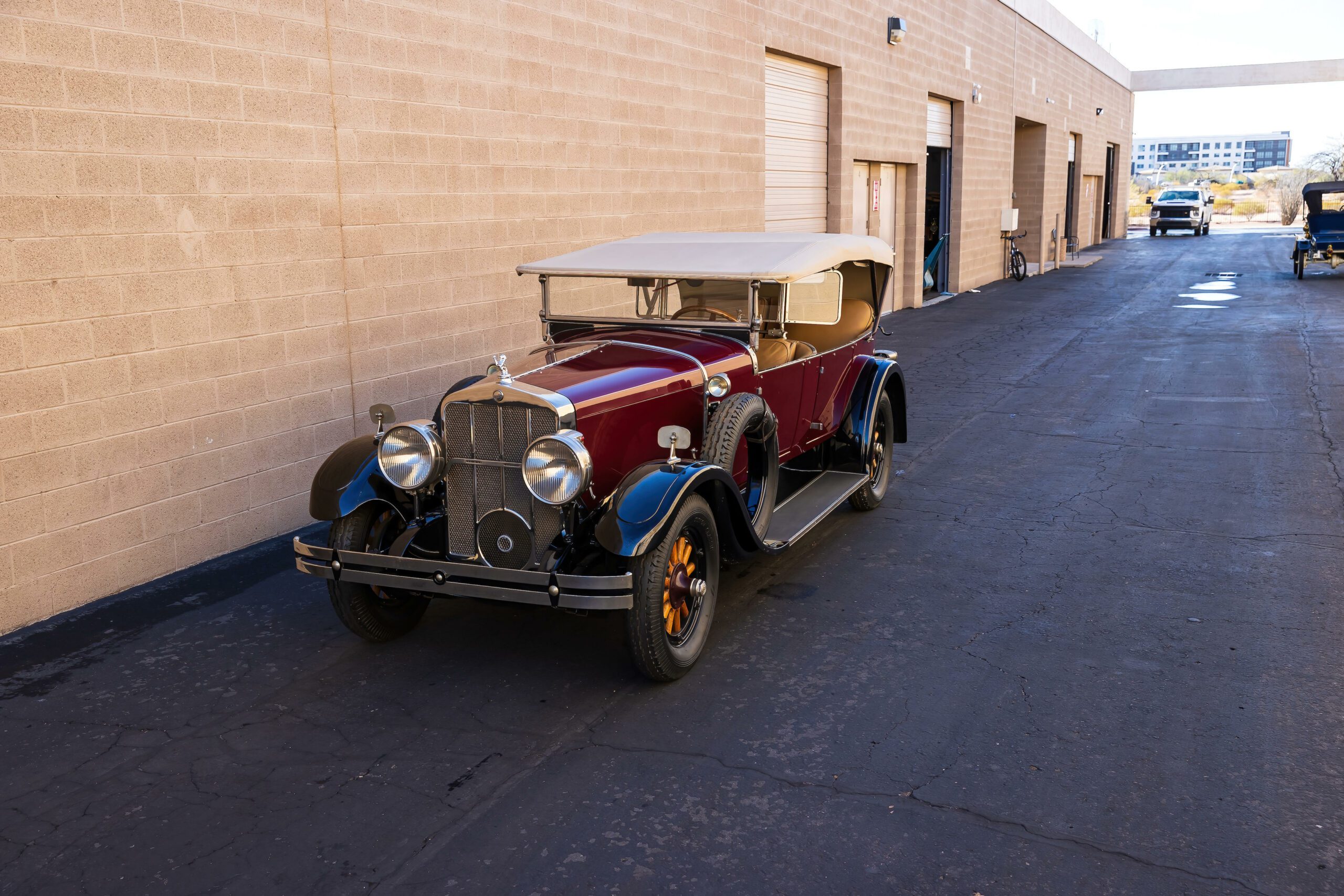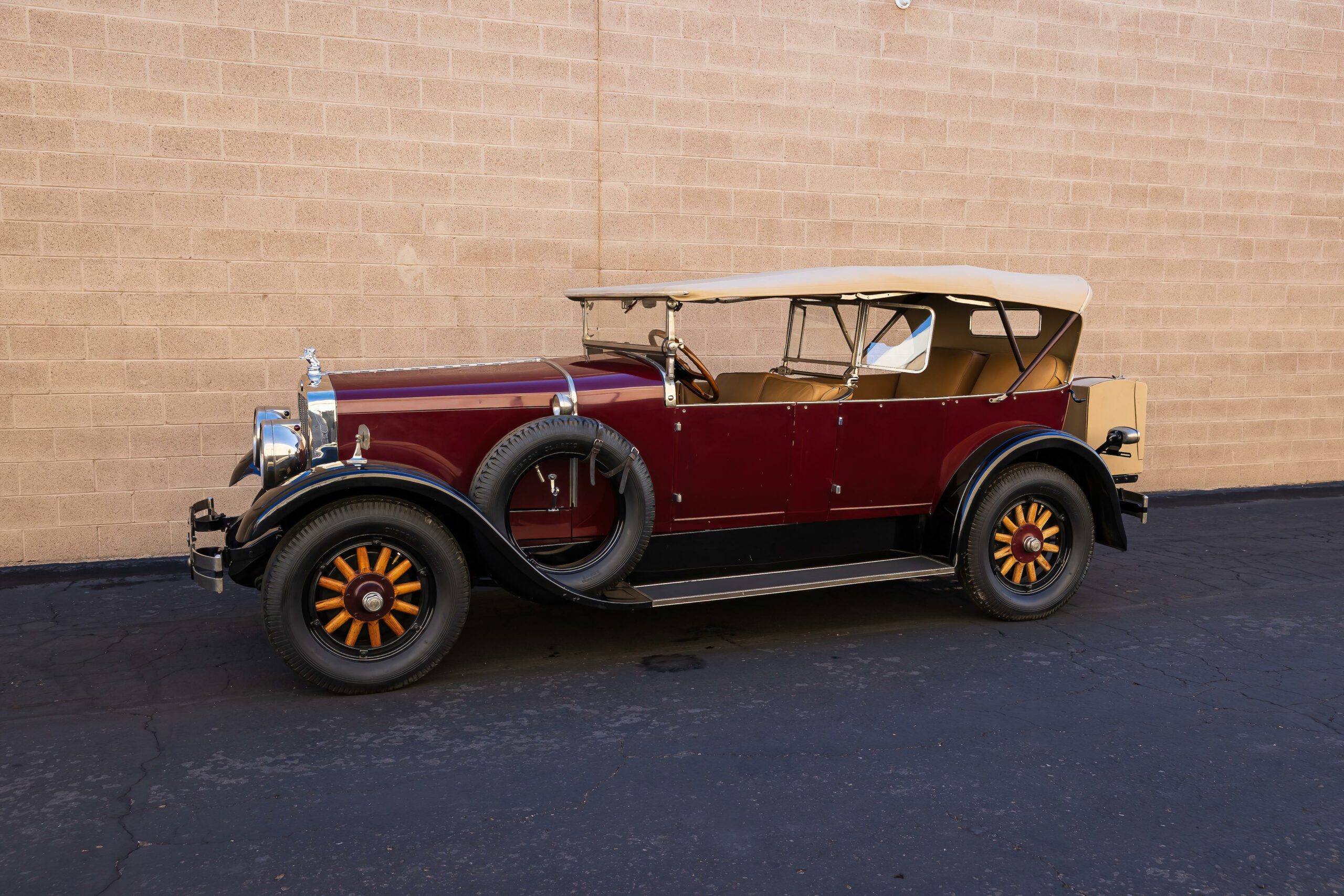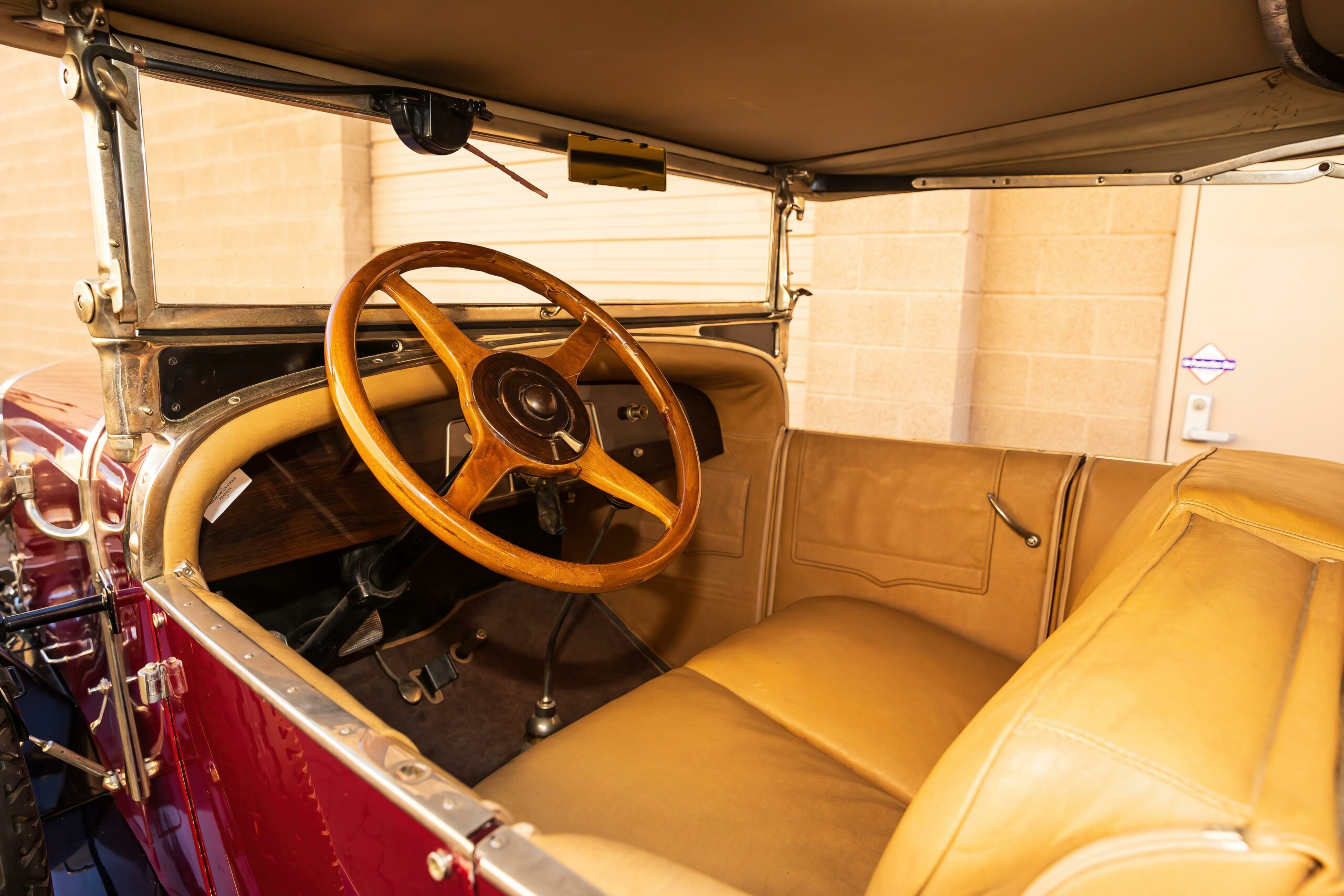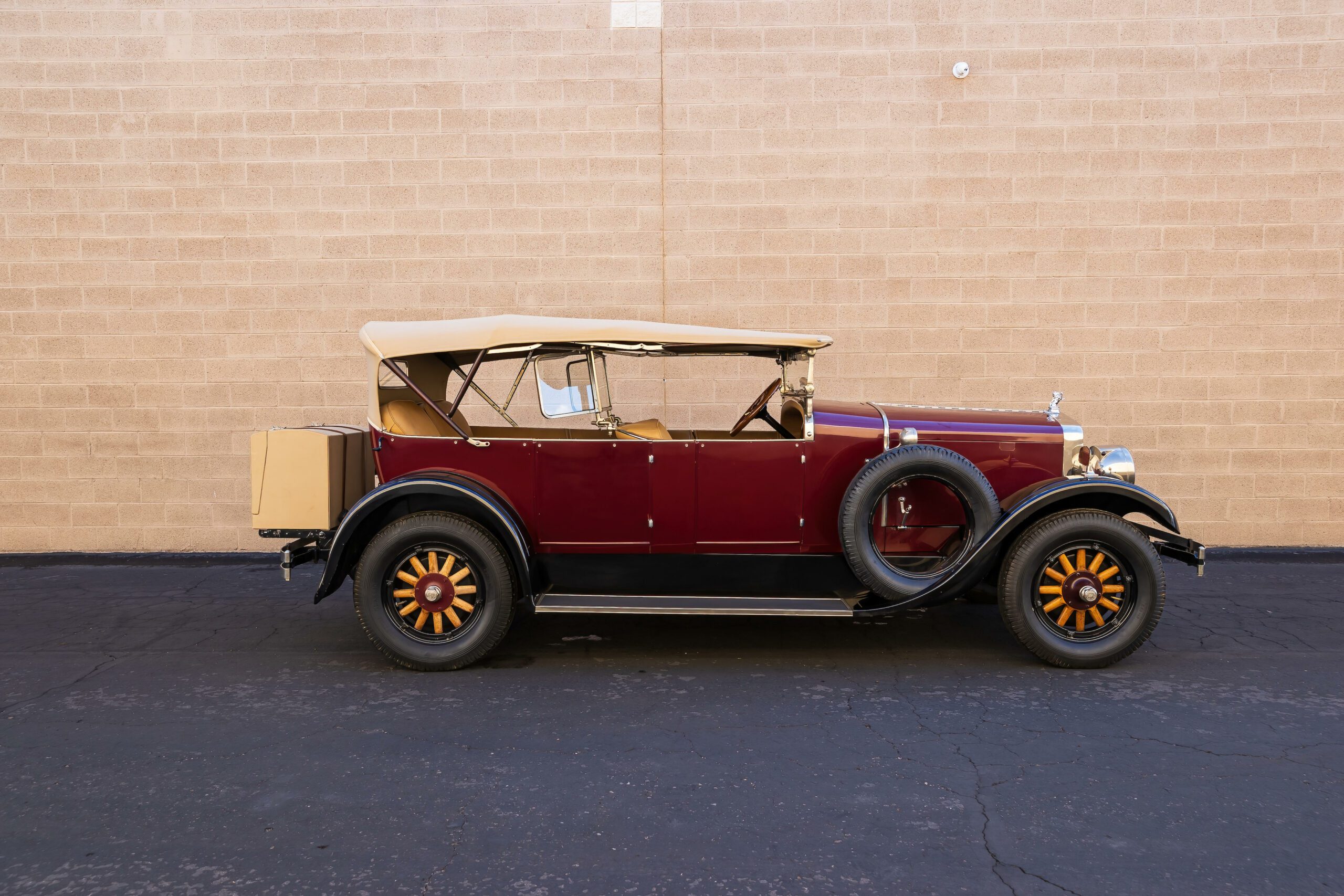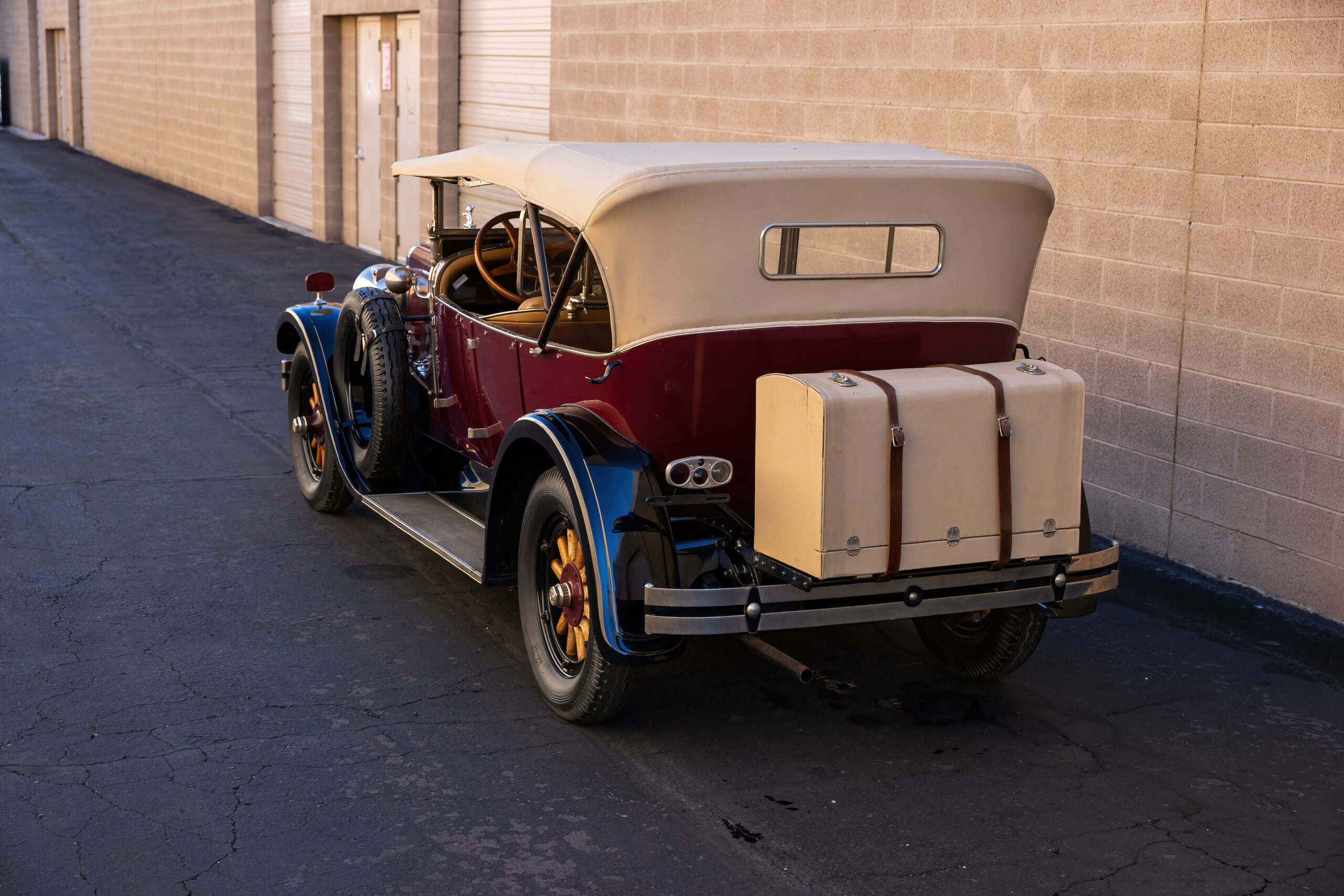The Franklin, engineered by John Wilkinson and produced by Syracuse-based die-casting manufacturer Herbert H Franklin, stands as America’s most enduring and prosperous air-cooled automobile. Originating as a prototype for the New York Automobile Company, the Franklin debuted in June 1902 with its first sale, a runabout, followed by a dozen more within the year.
At a time when water-cooled singles were the norm, Wilkinson’s innovative 1.7-liter air-cooled ‘four’ set the Franklin apart. Advanced features, including overhead valves, throttle speed control, a float-type carburetor, two-speed planetary transmission, and full-elliptic springing, contributed to its uniqueness.
Initially, the engine was transversely mounted, shifting to the conventional front position in 1905, coinciding with the introduction of fan cooling on most models. Franklin continually embraced innovation, adopting six-cylinder engines (1905), automatic ignition advance (1907), sedan coachwork (1913), aluminum pistons (1915), and electric carburetor priming (1921). The Franklin’s ability to operate effectively in extreme temperatures, coupled with its absence of a water pump and radiator, minimized maintenance costs when liquid cooling systems were often unreliable.
The 1928 Airman, featuring a 3.9-liter seven-bearing ‘six,’ introduced front wheel brakes in response to market demands for a conventional appearance. Named in homage to aviation pioneer Charles Lindbergh, a Franklin enthusiast, the Airman series symbolized Franklin’s commitment to enduring excellence.
Source: Bonhams


